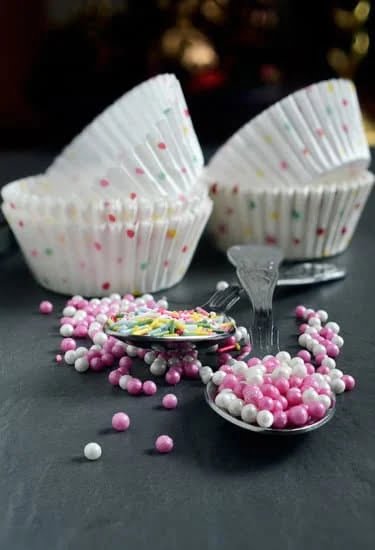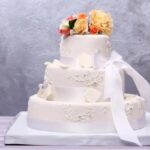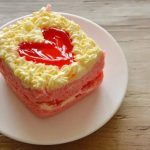Looking for the perfect buttercream icing recipe for cake decorating? Look no further. Buttercream icing is a versatile and delicious option for decorating cakes, and in this article, we will explore everything you need to know about it.
From the basic ingredients and step-by-step instructions to expert tips and troubleshooting common issues, we’ve got you covered. Whether you’re a beginner or an experienced baker, you’ll find helpful information to take your cake decorating skills to the next level.
Buttercream icing is a go-to choice for many bakers when it comes to cake decorating due to its smooth texture, easy spreadability, and ability to hold intricate designs. In this section, we will dive into what makes buttercream icing the perfect choice for cake decorating and why it’s a favorite among professionals and home bakers alike. So let’s get started on our journey to mastering the art of buttercream icing.
Throughout this article, we will provide a detailed breakdown of the basic ingredients needed for a perfect buttercream recipe along with step-by-step instructions on how to make it from scratch. We’ll also share expert advice on achieving the perfect consistency and flavor, explore different flavor variations, and discuss various cake decorating techniques using buttercream icing.
Whether you’re looking to frost a birthday cake or create intricate designs on a wedding cake, this article will equip you with all the knowledge and skills you need to elevate your cake decorating game with delicious buttercream icing.
The Basic Ingredients for Buttercream Icing
Buttercream icing is a versatile and delicious choice for cake decorating, known for its creamy texture and ability to hold shape when piped. The key to creating the perfect buttercream icing lies in using the right ingredients in the correct proportions. By understanding the basic components of a buttercream recipe, you can master the art of cake decorating with this delectable icing.
Here is a breakdown of the essential ingredients needed to make a perfect buttercream icing:
1. Butter: Unsalted butter is typically used as the base for buttercream icing. It’s important to ensure that the butter is at room temperature before starting the recipe to achieve a smooth and creamy consistency.
2. Confectioners’ Sugar: Also known as powdered sugar, it is used to sweeten and thicken the icing. Sifting the confectioners’ sugar before adding it to the recipe helps prevent lumps and ensures a smooth texture.
3. Vanilla Extract: This adds flavor to your buttercream icing. Pure vanilla extract is recommended for the best taste, but other extracts such as almond or lemon can be used to create different flavor variations.
4. Heavy Cream or Milk: Liquid is needed to thin out the consistency of the icing and make it easier to spread or pipe onto cakes. Heavy cream provides a richer taste, while milk can be used for a lighter option.
By mastering these basic ingredients, you’ll be on your way to creating delicious and versatile buttercream icing for all your cake decorating needs.
Remember that using high-quality ingredients will result in a better-tasting and more visually appealing product, so choose your supplies wisely when making your own buttercream icing from scratch.
Step-by-Step Instructions
Making your own buttercream icing from scratch is a great way to ensure that you have the perfect consistency and flavor for your cake decorating needs. Follow these step-by-step instructions to create a delicious and versatile buttercream icing that will elevate your cakes to the next level.
Gather Your Ingredients
To make buttercream icing, you will need:
- 1 cup (2 sticks) unsalted butter, softened
- 4 cups confectioners’ sugar, sifted
- 2 teaspoons vanilla extract
- 2-3 tablespoons heavy cream or milk
Cream the Butter
In a large bowl, beat the softened butter with an electric mixer on medium speed until it is smooth and creamy. This usually takes about 2-3 minutes. Scrape down the sides of the bowl with a rubber spatula to ensure that all of the butter is well mixed.
Add the Sugar and Flavoring
Gradually add in the sifted confectioners’ sugar, beating well after each addition until it is fully incorporated. Then, add in the vanilla extract and mix until combined. At this point, you can also add any other flavorings or colors to customize your buttercream icing.
By following these simple steps and using high-quality ingredients, you can easily create a delicious buttercream icing that is perfect for decorating cakes. Whether you’re a beginner or an experienced baker, this recipe will become a staple in your kitchen for all your cake decorating needs.
Tips and Tricks for Perfect Buttercream
When it comes to decorating a cake with buttercream icing, achieving the perfect consistency and flavor is key. There are a few tips and tricks that can help you create a buttercream that is not only easy to work with but also delicious. Here’s some expert advice on how to achieve the perfect buttercream for your cake decorating needs.
Using the Right Ingredients
One of the most important factors in getting the perfect buttercream consistency and flavor is using the right ingredients. Make sure that you are using high-quality butter, pure vanilla extract, and sifted confectioners’ sugar. Using quality ingredients will ensure that your buttercream has a smooth texture and rich flavor.
Achieving the Perfect Consistency
To achieve the ideal consistency for your buttercream icing, it’s crucial to start with room temperature butter. This will make it easier to whip the butter into a smooth and fluffy texture. Gradually add in the confectioners’ sugar and mix until well combined. If your buttercream is too thick, you can add a tablespoon of milk or cream at a time until you reach the desired consistency.
Adding Flavor Enhancements
To add an extra layer of flavor to your buttercream icing, consider incorporating different extracts such as almond, lemon, or coconut. You can also experiment with adding melted chocolate or fruit purees for a unique twist on traditional buttercream icing. Just be sure to adjust the amount of confectioners’ sugar accordingly to maintain the right consistency.
By following these tips and tricks, you can ensure that your buttercream icing not only looks beautiful but also tastes amazing when used for cake decorating. Whether you’re frosting a birthday cake or piping decorative designs onto cupcakes, having the perfect buttercream recipe on hand can elevate any baked creation.
Flavor Variations
When it comes to cake decorating, buttercream icing is a versatile and delicious choice. Not only does it provide a smooth and creamy base for decorating cakes, but it also offers endless opportunities for customization with different flavors and additions. Whether you’re looking to add a subtle hint of flavor or create a bold and unique taste, there are plenty of options to explore when customizing your buttercream icing.
Here are some flavor variations and additions to consider when customizing your buttercream icing:
- Vanilla: A classic choice for buttercream icing, vanilla adds a sweet and timeless flavor that pairs well with any type of cake.
- Chocolate: For chocolate lovers, adding cocoa powder or melted chocolate to your buttercream icing can create a rich and indulgent flavor profile.
- Fruit Purees: Incorporating fruit purees such as raspberry, strawberry, or lemon into your buttercream icing can add a burst of natural fruit flavor and vibrant color.
- Extracts: Experiment with different extracts such as almond, peppermint, or coconut to infuse your buttercream icing with unique and aromatic flavors.
In addition to these flavor variations, you can also customize your buttercream icing with additions such as crushed cookies, chopped nuts, or even small pieces of candy. The key is to experiment and find the perfect combination that complements the flavors of your cake while adding an extra layer of deliciousness. With these options in mind, you can take your buttercream icing recipe for cake decorating to the next level.
Cake Decorating Techniques
Buttercream icing is the go-to choice for many bakers when it comes to cake decorating due to its versatility and ease of use. Whether you’re a novice or an experienced baker, mastering the art of using buttercream icing for piping, frosting, and decorating cakes can take your creations to the next level. With the right techniques and a bit of practice, you can achieve professional-looking results that are sure to impress.
When it comes to piping with buttercream icing, having the right consistency is key. If the icing is too stiff, it will be difficult to pipe smoothly, and if it’s too soft, your designs may not hold their shape. It’s important to find the perfect balance by adjusting the amount of liquid or powdered sugar in your recipe. Additionally, using a piping bag with various tips can also help you achieve different designs and textures for your cakes.
Frosting a cake with buttercream icing requires a steady hand and some patience. Start by applying a thin layer of icing, known as a crumb coat, to seal in any loose crumbs before adding a thicker layer for the final finish. Using an offset spatula or a bench scraper can help you achieve smooth and even surfaces on your cakes. You can also experiment with different textures and patterns by using different tools or techniques for spreading the icing.
Decorating cakes with buttercream icing offers endless possibilities for creativity. From creating intricate borders and floral designs to writing messages and adding embellishments, there are numerous ways to make your cakes stand out. By practicing various techniques like rosettes, ruffles, or basket weaving, you can add unique touches that will make your cakes look professionally decorated.
| Piping Tips | Frosting Tools |
|---|---|
| Use various piping tips for different designs such as stars, shells, or swirls | Offset spatula or bench scraper for smoothing out the icing |
| Adjust the consistency of the buttercream for easier piping | Piping bags with couplers for easy tip switching |
Troubleshooting Common Issues
Buttercream icing is a delicious and versatile option for cake decorating, but it’s not always smooth sailing. There can be common issues that arise when working with this popular frosting. Whether you’re new to cake decorating or have been at it for years, it’s essential to know how to troubleshoot these problems when they occur.
One common issue when working with buttercream icing is air bubbles forming in the frosting. This can make your finished product look uneven and unprofessional. To prevent air bubbles, make sure to mix your buttercream on a low speed and avoid overmixing. If air bubbles do appear, you can try using a spatula to gently press them out or pop them with a toothpick.
Another issue that cake decorators often face with buttercream icing is the frosting becoming too runny or too stiff. If your buttercream is too runny, try adding more powdered sugar gradually until you reach the desired consistency. On the other hand, if your buttercream is too stiff, you can add a small amount of milk or heavy cream to loosen it up.
Additionally, sometimes buttercream icing can become grainy or gritty in texture, which can be undesirable when decorating a cake. One possible solution to this issue is ensuring that your ingredients are at room temperature before making the buttercream. Additionally, sifting your powdered sugar before adding it to the mixture can help prevent graininess in the final product.
| Common Issue | Solution |
|---|---|
| Air bubbles in frosting | Mix on low speed and gently press out or pop any air bubbles |
| Runny or stiff frosting | Add more powdered sugar for runny frosting; add milk or heavy cream for stiff frosting |
| Grainy or gritty texture | Ensure ingredients are at room temperature; sift powdered sugar before adding |
Buttercream Icing Recipe for Cake Decorating
In conclusion, buttercream icing is the perfect choice for cake decorating due to its versatility and delicious taste. Whether you are a beginner or an experienced baker, mastering the art of making buttercream icing can take your cake decorating skills to the next level. By understanding the basic ingredients, following step-by-step instructions, and learning tips and tricks for achieving the perfect consistency and flavor, you can create beautiful and tasty cakes for any occasion.
One of the key factors in creating a successful buttercream icing recipe for cake decorating is using high-quality ingredients and following precise measurements. The result will be a smooth and creamy texture that is easy to work with when piping, frosting, or decorating cakes. With the added benefit of being able to customize flavors and additions, such as chocolate, fruit purees, or extracts, you can cater to any taste preference or theme.
By mastering different cake decorating techniques using buttercream icing, such as piping flowers or creating textured finishes, you can elevate your baking skills and impress friends and family with professional-looking desserts. Additionally, knowing how to troubleshoot common issues when working with buttercream icing will ensure that every cake turns out picture-perfect. Overall, this tried and tested buttercream icing recipe for cake decorating will become a staple in your baking repertoire for years to come.
Frequently Asked Questions
Which Buttercream Is Best for Decorating a Cake?
The best buttercream for decorating a cake is typically Swiss meringue buttercream. It has a smooth and creamy texture, making it easy to spread and pipe onto a cake. Its stable consistency holds up well for intricate designs.
What Is the Best Smooth Buttercream for Cake Decorating?
When it comes to the best smooth buttercream for cake decorating, many bakers swear by Italian meringue buttercream. Its glossy and silky texture makes it perfect for creating a flawless finish on cakes. This type of buttercream also holds up well in warmer temperatures.
How Do You Make Buttercream Smooth and Not Grainy?
To make buttercream smooth and not grainy, it’s crucial to start with room temperature ingredients, particularly the butter. Cream the butter thoroughly before adding the sugar, and then continue beating until the mixture is light and fluffy. Sifting the powdered sugar also helps prevent any graininess in the final product.

Welcome to our cake decorating blog! My name is Destiny Flores, and I am the proud owner of a cake decorating business named Cake Karma. Our mission is to provide delicious, beautiful cakes for all occasions. We specialize in creating custom cakes that are tailored specifically to each customer’s individual needs and tastes.





